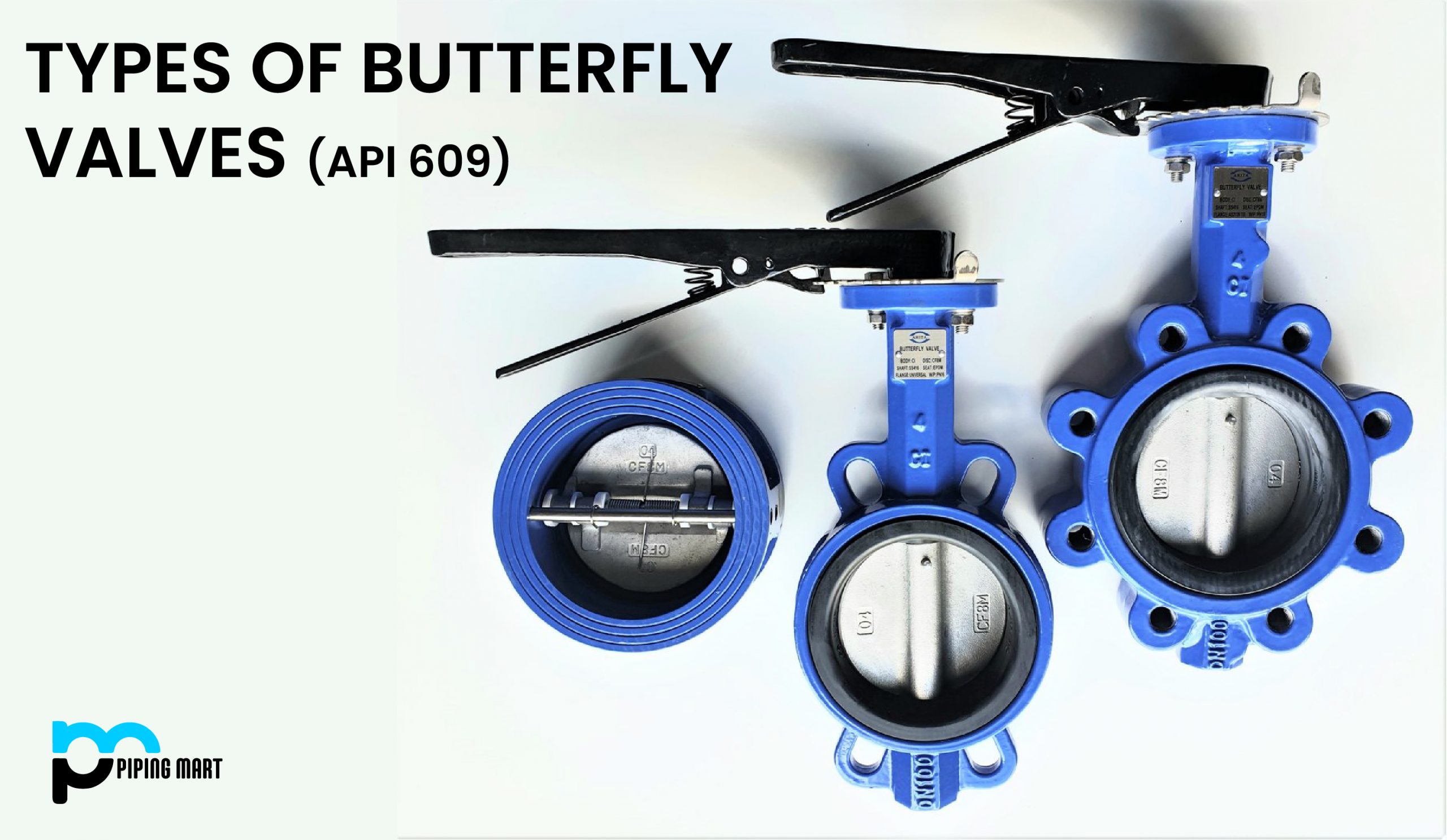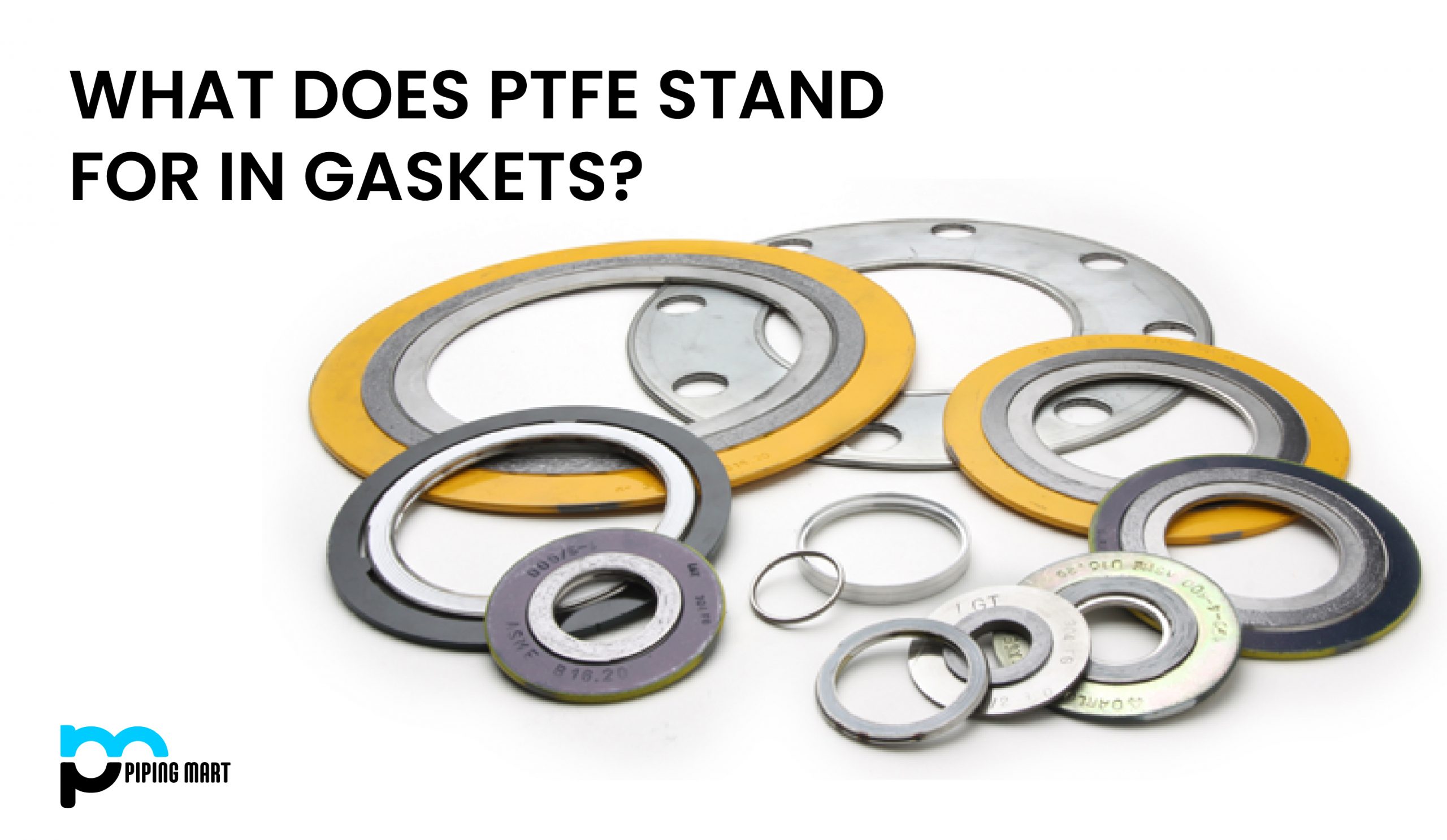A butterfly valve is used to regulate the movement of a fluid. API 609 Centric Butterfly valves are preferred over gate and ball valves for non-critical, including low-pressure applications. These valves are lighter, cheaper, and simpler to install. API 609 Eccentric butterfly valves are commonly used with globe and ball valves for many applications.
Types of Butterfly Valves
Butterfly valves are available in several designs with multiple applications and pressure limits. Butterfly valves can be classified based on connection design, actuation method, and disc closure design.
1. According to connection Design
Butterfly valves can be connected with the piping system in different forms. The most popular styles are the wafer type connection and lug type connection.
-
Wafer-style connection
A wafer-style butterfly valve is the most efficient type of valve, which is sandwiched between two pipe flanges. This valve has flange holes on the outer part of the body, and sometimes it comes without a hole. The valve and pipe flange can be sealed by using gaskets, O-rings, and flat valve faces. Wafer style connection is produced to make seals for bi-directional flow and restrict backflow in systems.
-
Lug-style
The lug-style butterfly valve has lungs, which are also known as threaded inserts outside the body of the valve. This design allows the detachment at one side without changing the connection of another side. Lug-style butterfly valves are ideal to use in dead-end service. The lug-style butterfly valves sustain the weight of the piping in the valve assembly.
2. Disc Closure Design
Butterfly valves can be divided into concentric or eccentric types depending on the location of the stem related to the disc and the angle of the seat surface on which the disc closes.
-
Concentric
The Centric or concentric butterfly valve is the primary type of butterfly valve design. In this design of the valve, the stem crosses from the centerline of the disc. Between the pipe bore and the seat, there is the inside diameter boundary. This zero-offset valve is also called resilient-seated because it relies on the adaptability of the seat rubber to seal the flow after closing it efficiently. At around 85° during a 90° rotation, the disc first comes into connection with the seat in this kind of valve. Concentric butterfly valves are generally used for low-pressure applications.
-
Eccentric
In the eccentric butterfly valve, the stem passes behind the centerline of the disc instead of passing through it. As the stem is positioned behind the centerline, the valve is called as single-offset. This design helps to minimize the disc contact with the seal, which increases the service life of the valve. In double-offset butterfly valves or doubly eccentric butterfly valve, the stem is positioned at the backside of the disc with an extra offset. This stem design allows the rotating disc to cover over the seat only for one to three degrees. A triple offset butterfly valve is frequently used in more complex applications that have the same design as a double offset butterfly valve. A triple offset butterfly valve is efficient and reduces wear. This valve has metal seats that create a bubble-tight shut-off and make it able to use in higher temperature applications.
3. Actuation Method
Butterfly valves can be operated manually or automatically. Manually it can be used by handles, and automatically it can be operated by actuators. These mechanisms allow the disc to rotate precisely from entirely open to completely closed. There are different types of butterfly valves as per the actuation stages.
-
Manual Actuation
Manual actuated butterfly valves are available at reasonable rates and also simple to operate. Here are two standard methods of manual actuation:
• Hand Lever: By this method, the valve can be open, partly open, or closed quickly.
• Gear: Gear operated valves are self-locking and also has position indicators.
-
Automatic Actuation
Automatic actuators are a secure method of regulating valves. This type of valves can stay open or close if the actuator fails. The three types of automatic actuation:
• Electric type of valve is operated by using an electric motor.
• Pneumatic type of valves needs compressed air to rotate a piston for open or close operation.
• Hydraulic type of valves requires hydraulic pressure to rotate a piston for open or close operation.

Pipingmart is B2B portal specializes in industrial, metal and piping products. Also, share latest information and news related to products, materials and different types grades to help business dealing in this industry.




